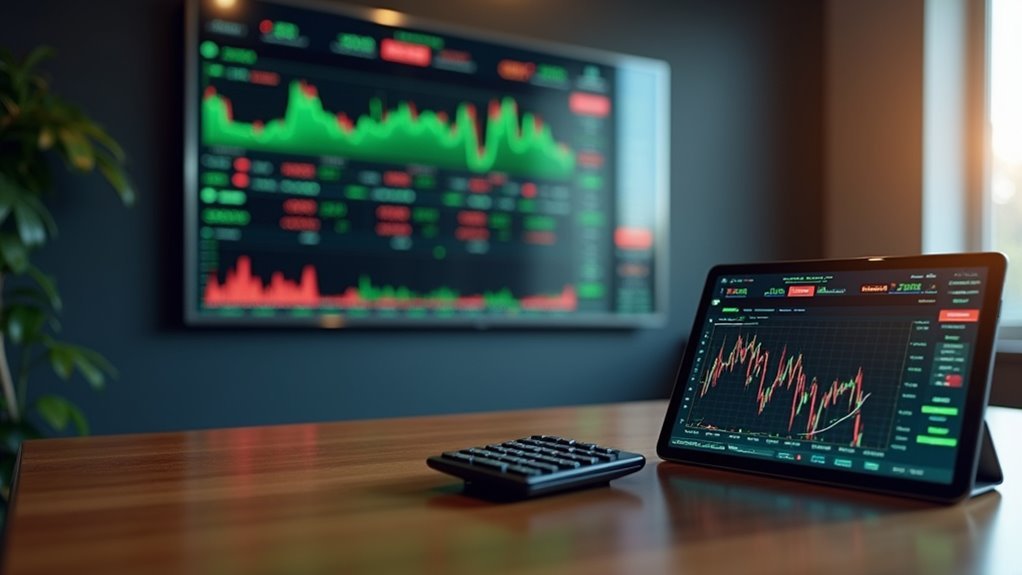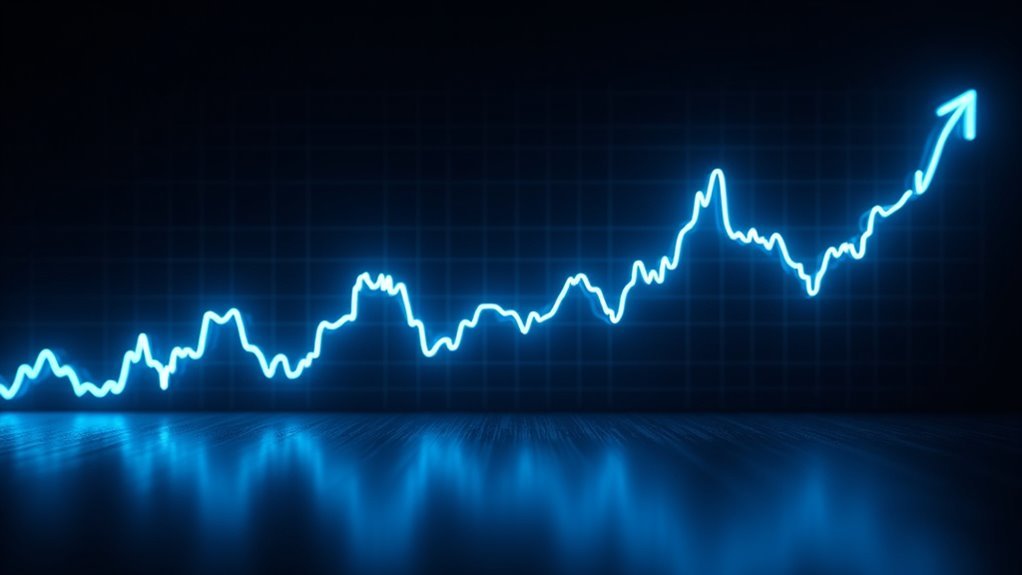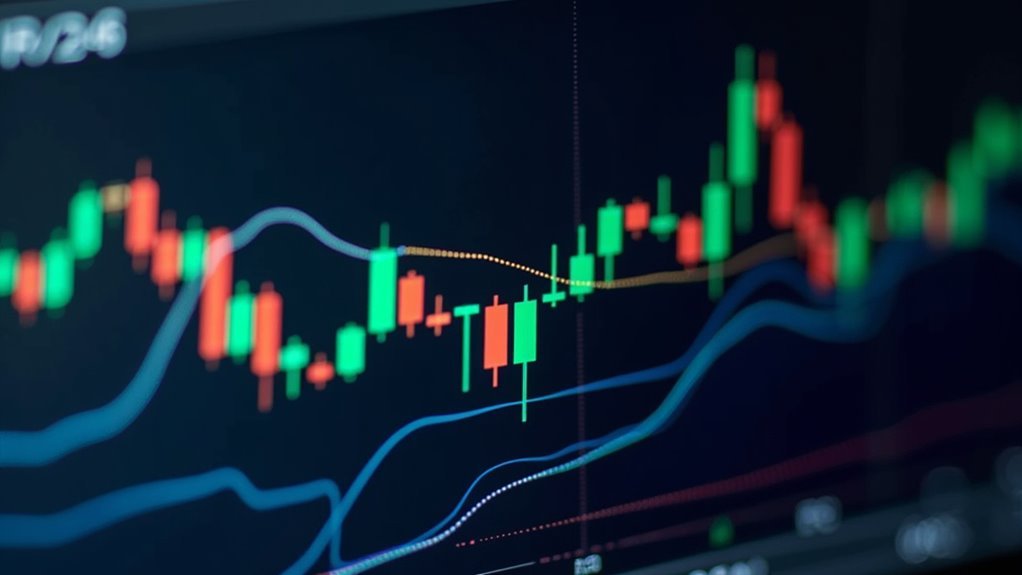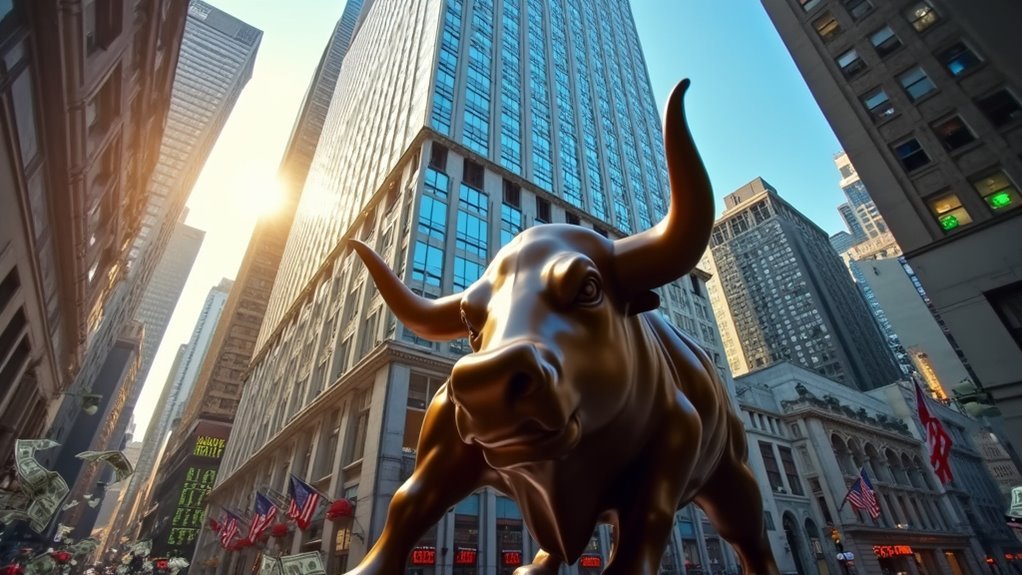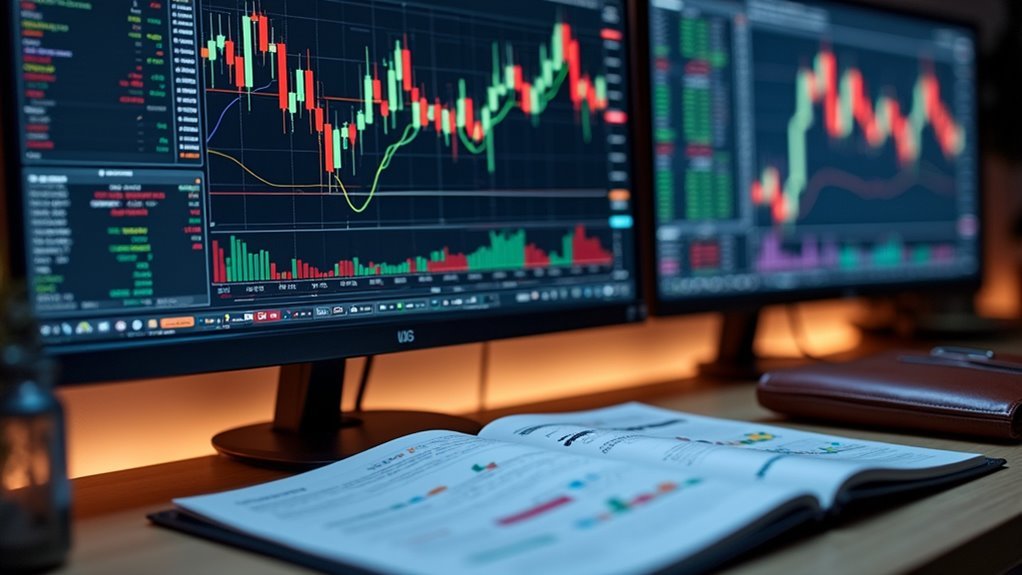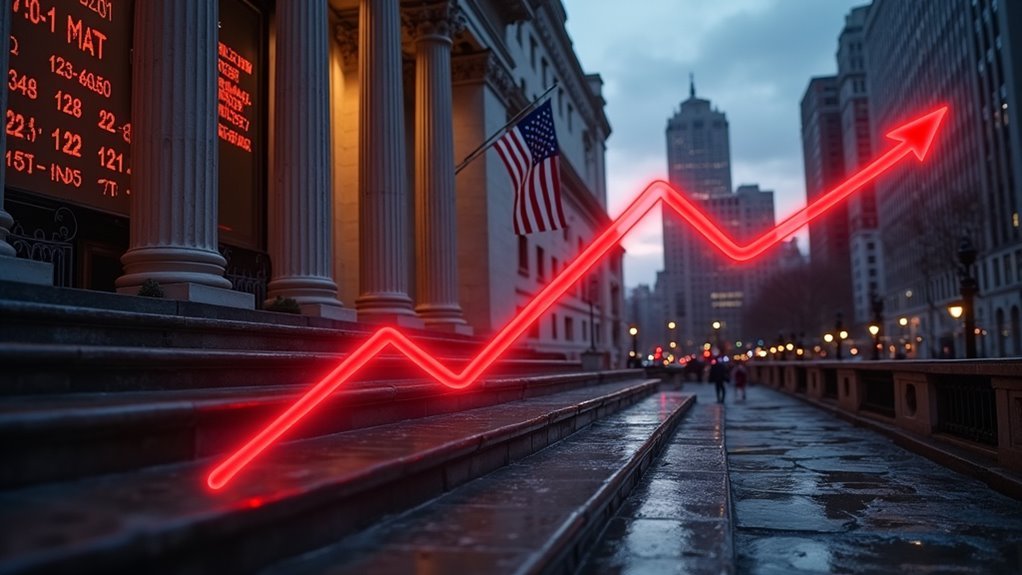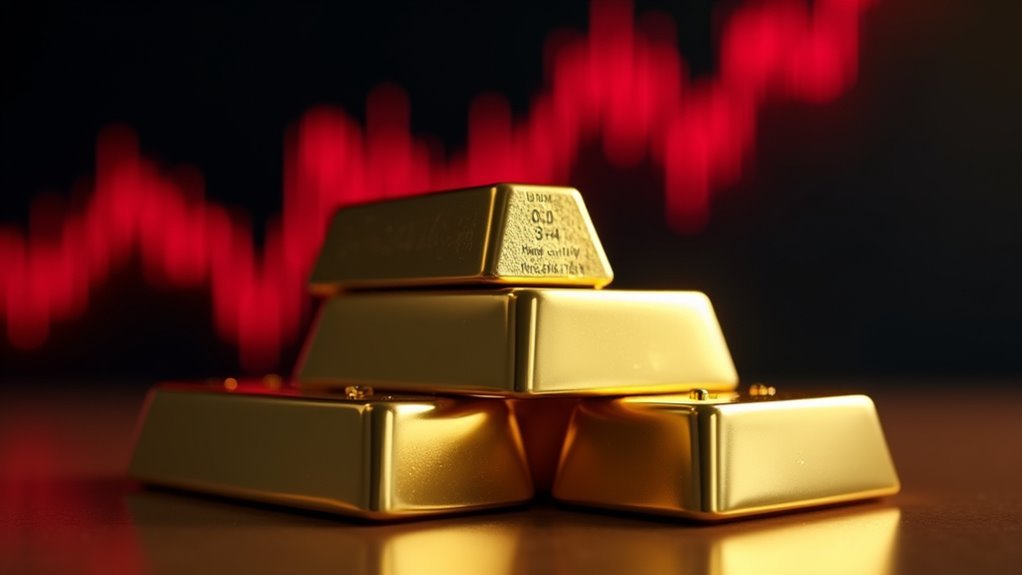Market capitalization is Wall Street’s way of sizing up companies by multiplying stock price by total shares. It’s like measuring a company’s weight – mega-caps like Apple are the elephants, while micro-caps are more like mice. This metric matters because it signals stability and risk: bigger usually means steadier, while smaller means volatile but potentially spicy returns. There’s a whole universe of numbers behind these simple calculations.

Money talks – and market capitalization speaks volumes about a company’s worth. It’s the total value of all a company’s outstanding shares, calculated by multiplying the current stock price by the number of shares. Simple math, big implications. This single number tells investors whether they’re looking at a corporate giant or a tiny startup trying to make it big.
Market cap tells us what a company’s truly worth – a simple calculation that separates the business behemoths from the ambitious underdogs.
Companies come in different sizes, just like coffee cups at your local cafe. Mega-caps are the venti-sized corporations, worth over $200 billion – think tech giants and global conglomerates. Large-caps sit between $10 billion and $200 billion, while mid-caps range from $2 billion to $10 billion. Small-caps and micro-caps are the corporate world’s espresso shots, valued under $2 billion and $300 million respectively.
Market cap matters because it’s a quick way to gauge a company’s stability and risk profile. Larger companies tend to be more stable – like massive ships that can weather economic storms. Smaller ones? They’re more like speedboats – agile but more likely to get tossed around when markets get choppy. Interest rate changes can dramatically affect how investors view different market cap segments. The measure helps investors build a diversified portfolio across various company sizes.
But here’s the catch – market cap isn’t perfect. It doesn’t tell you about a company’s debt, and it completely ignores assets. During market bubbles, these numbers can get as inflated as a bounce house at a kid’s party. Stock splits, buybacks, and new share issues can all mess with market cap calculations. Many investors track the S&P 500 index to understand how large-cap stocks are performing overall.
And sometimes, market sentiment can push values way out of whack with reality. Financial analysts use market cap everywhere – from building stock indices to determining which companies make the cut for certain investment portfolios.
It’s essential for calculating various financial ratios and helps investors compare companies within the same industry. But smart investors know it’s just one piece of the puzzle. Like any measurement in the financial world, it’s got its limits. Market cap might tell you how big the restaurant is, but it won’t tell you if the food is any good.
Frequently Asked Questions
How Often Does a Company’s Market Capitalization Change During Trading Hours?
A company’s market cap changes constantly – we’re talking hundreds or even thousands of times during trading hours. Every single stock trade affects it.
Large-cap stocks, especially those heavily traded, see the most frequent fluctuations. The changes happen in real-time as stock prices bounce around. It’s basically a non-stop rollercoaster from market open to close, driven by everything from news to algorithmic trading.
Can Market Capitalization Predict a Company’s Future Stock Performance?
Market cap alone can’t perfectly predict stock performance.
Sure, small-caps historically beat large-caps – delivering 12% versus 10% annual returns since 1925.
But it’s not that simple. Company fundamentals, industry trends, and market conditions all play vital roles.
Studies show market cap size matters, but it’s just one piece of the puzzle.
Past performance doesn’t guarantee future results. Period.
Do Stock Splits Affect a Company’s Overall Market Capitalization?
Stock splits don’t affect market capitalization – period.
Think of it like cutting a pizza: whether you slice it into 8 pieces or 16, it’s still the same pizza. When a company splits its stock, the total value stays identical.
A 2-for-1 split doubles the shares but halves the price. Math doesn’t lie. Market cap = shares × price. Simple as that.
Why Do Private Companies Not Have Market Capitalization?
Private companies don’t have market capitalization because they lack publicly traded shares – it’s that simple.
Without stock trading on public exchanges, there’s no way to calculate their market value through share price multiplication.
No public market means no daily trading, no visible share price, and zero market cap.
They rely on other valuation methods like 409A valuations, funding rounds, or DCF analysis instead.
How Does Market Capitalization Compare to Enterprise Value?
Market capitalization simply measures a company’s equity value, while enterprise value digs deeper.
EV adds debt and subtracts cash to give a more complete picture. Think of market cap as the sticker price, but EV as the total cost of ownership.
While market cap bounces around with stock prices, EV stays steadier through capital structure changes. For acquisition analysis, EV typically tells the better story.

